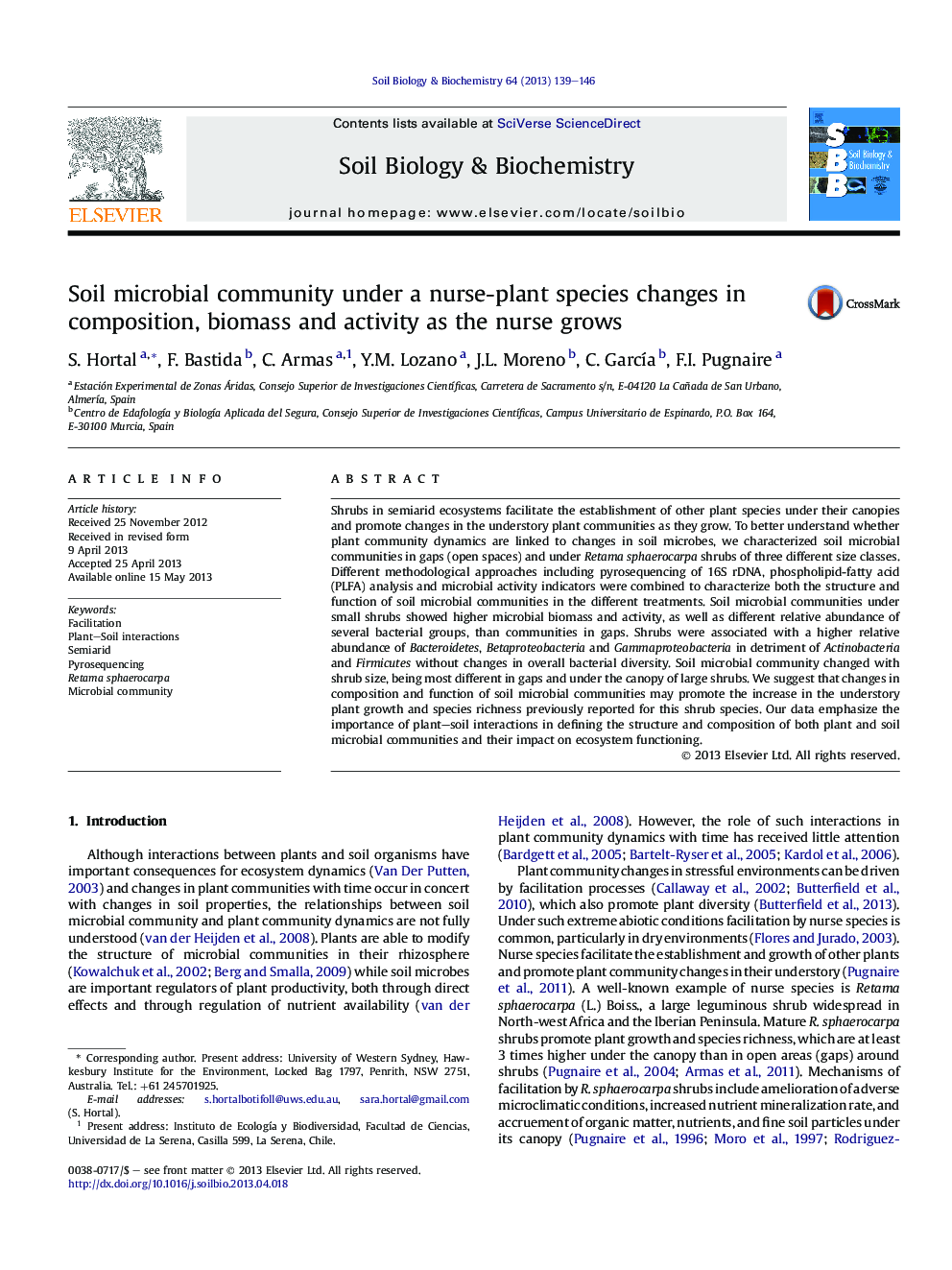| Article ID | Journal | Published Year | Pages | File Type |
|---|---|---|---|---|
| 2024773 | Soil Biology and Biochemistry | 2013 | 8 Pages |
Abstract
Shrubs in semiarid ecosystems facilitate the establishment of other plant species under their canopies and promote changes in the understory plant communities as they grow. To better understand whether plant community dynamics are linked to changes in soil microbes, we characterized soil microbial communities in gaps (open spaces) and under Retama sphaerocarpa shrubs of three different size classes. Different methodological approaches including pyrosequencing of 16S rDNA, phospholipid-fatty acid (PLFA) analysis and microbial activity indicators were combined to characterize both the structure and function of soil microbial communities in the different treatments. Soil microbial communities under small shrubs showed higher microbial biomass and activity, as well as different relative abundance of several bacterial groups, than communities in gaps. Shrubs were associated with a higher relative abundance of Bacteroidetes, Betaproteobacteria and Gammaproteobacteria in detriment of Actinobacteria and Firmicutes without changes in overall bacterial diversity. Soil microbial community changed with shrub size, being most different in gaps and under the canopy of large shrubs. We suggest that changes in composition and function of soil microbial communities may promote the increase in the understory plant growth and species richness previously reported for this shrub species. Our data emphasize the importance of plant-soil interactions in defining the structure and composition of both plant and soil microbial communities and their impact on ecosystem functioning.
Keywords
Related Topics
Life Sciences
Agricultural and Biological Sciences
Soil Science
Authors
S. Hortal, F. Bastida, C. Armas, Y.M. Lozano, J.L. Moreno, C. GarcÃa, F.I. Pugnaire,
